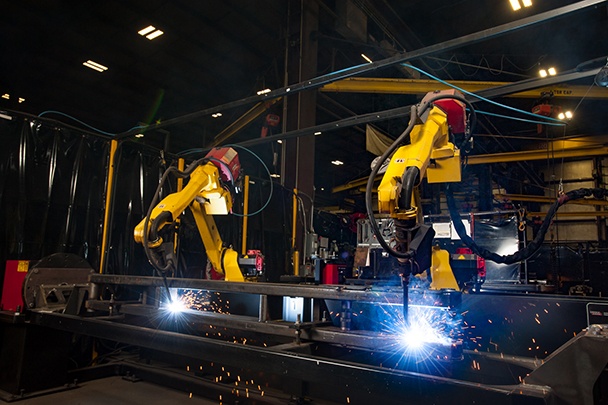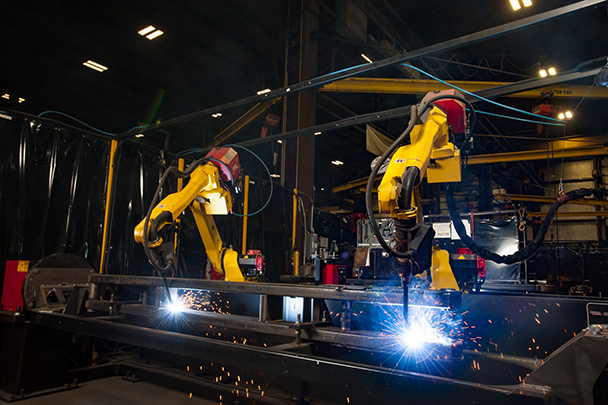
Robotics in Tomorrow’s OEM Supply Chain
October 29, 2019
Robotics are on the rise across industrial Original Equipment Manufacturers (OEMs).
In their article, “Industrial Robotics: Opportunities for Manufacturers of End Effectors,” McKinsey & Company characterizes today’s brigade of robots in the manufacturing and industrial sectors as leading a purposeful existence: “At automotive OEMs, industrial robots are welding and painting cars. Within warehouses, they are putting stock on shelves, picking out items for orders, transporting goods from docks to shipping areas, and packaging them for transport. At semiconductor plants, robots move delicate wafers without damaging any components. Elsewhere, they’re assisting with gluing, assembling, cutting, grinding, and other routine yet critical tasks.”

Lowering cost, in addition to product quality, safety and efficiency improvements, is behind the adoption of robotics for many use cases, claims McKinsey. “Cost is a factor in their rise, since the average selling price for a robot has fallen by more than half over the past 30 years. Emerging markets have an additional imperative for automation: the need to improve product quality to compete effectively in the export market.”
While robotics are being adopted in new and innovative ways by OEMs, the impact of this technology can also be felt through adoption by your supply chain network. Here’s how:
- Inventory control & management. Supply Chain Dive writes that retailer Walmart has submitted a patent application that “outlines a system that uses curved shelving that will flatten as more inventory is placed on it. The lighter the inventory the larger the gap left between the curved shelving and the frame. A system of lasers would measure this gap and a computing system would use internal knowledge of what inventory is stocked where the measurement is taken to provide an inventory level.” For any supplier-partners that are managing your fabricated parts inventory requirements, there is a similar opportunity to outfit shelving with sensor-based systems for accurate and efficient inventory counts that may be accessible through a Customer Portal or integrated with your own Supplier Management System. That can add up to cost savings for your OEM operation.
- Fulfillment. Earlier this year Amazon reportedly rolled out robotic packing systems to “increase safety, speed up delivery times and add efficiency across its network,” as described in another Supply Chain Dive brief. Supplier-partners that incorporate systems like this concept, albeit at an industrial scale, can reduce overall fulfillment time, minimize safety issues related to worker strain and other incidents, and potentially add an enhanced layer of traceability to the process. What’s the OEM impact? Faster reporting, communication and receipt of your fabricated parts.
- Quality inspections. Robotic quality control/assurance systems “can use machine vision and laser measurement sensors to conduct inspections either autonomously or semi-autonomously. These systems can inspect the dimension, assembly and other aspects of parts,” states Global Electronic Services. The many benefits of such a system to your supplier-partners include versatility – the ability to inspect a robotic weld seam inside a narrow casing, for example – as well as enhanced efficiency. Assemblies aren’t required to be disassembled. Data from robotic inspections wouldn’t need to be transcribed or re-keyed. Your OEM business reaps these benefits through higher quality product received in less time on a more consistent basis.
Putting It All Together
Robotics are already changing our industrial landscape for the better, as advanced OEMs take on more automated initiatives. The impact becomes even greater – through shorter lead times, safer and more efficient operations, higher-quality product and overall reduced costs – when your supply chain network embarks on the same journey. If you’re looking for a strategic metal fabrication partner who shares your goals and automation vision, contact Miller Fabrication Solutions to discuss your project plans.